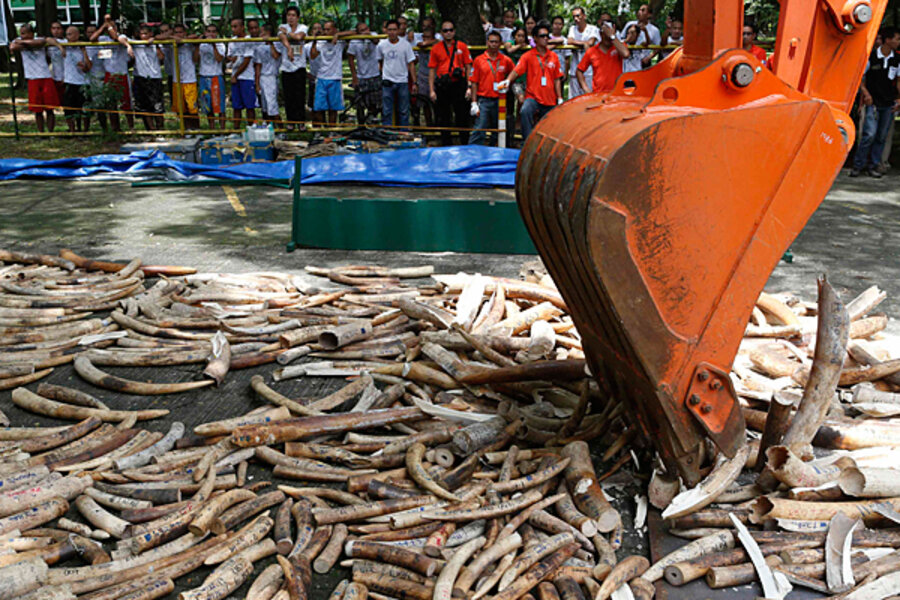Could nuclear weapons save the elephants?
Researchers have come upon a new tool in the fight against poaching of elephants, rhinos, hippos, and other endangered wildlife: nuclear weapons.
No, they're not launching nuclear missiles at the poachers, a tactic that even the most passionate conservationists would probably deem excessive. Instead, they're using the fallout from above-ground nuclear tests to determine the ivory's age, and thus its legality.
Here's how it works: Beginning with the Trinity test on July 16, 1945,and continuing until the Partial Test Ban Treaty was signed in 1963, the United States, Russia, China, France, and the United Kingdom detonated hundreds of thermonuclear devices above ground. Neutrons hurtling from these blasts fused with nitrogen in the air to form a heavy, radioactive isotope of carbon. Known as carbon-14, this isotope quickly dispersed throughout the atmosphere, where it then made its way into plants, animals, and whatever tusks, teeth, and horns they might have.
Since then, the amount of carbon-14 has been steadily declining, with most of it soaked up into the oceans. In 15 years or so, atmospheric concentrations will return to pre-atomic levels.
But for now, these microscopic Cold War relics allow scientists to precisely date tusks, teeth, and horns, according to research appearing in the current issue of the Proceedings of the National Academy of Sciences.
It's a bit like counting the rings on trees, except that you measure the amount of carbon-14 at various points along the length of the ivory. By comparing them with carbon-14 measurements from samples whose age is known, scientists now say they can determine the time of the animal's death within about a year, as long as it was killed after 1955.
International treaties banned ivory from Asian elephants after 1975 and from African elephants after 1989. In the United States, ivory is legal if it was imported before 1989, or, if it was imported after 1989, it must be at least 100 years old.
Yet until now, there has been no way to refute dealers who say their ivory predates the bans.
"With an accurate age of the ivory, we can verify if the trade is legal or not" said Kevin Uno, the study's lead author, in a press release. Dr. Uno did this research for his doctoral dissertation at the University of Utah.
Each year, about 30,000 elephants are killed for their tusks, with most of them ending up in China and the United States. There are only about 420,000 African elephants remaining in the wild.
The study's authors say that the test can be performed for about $500.






